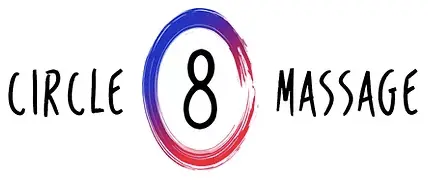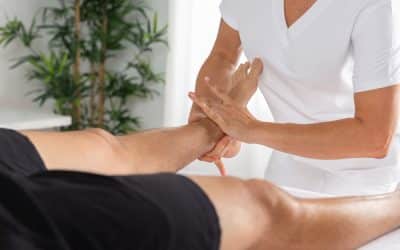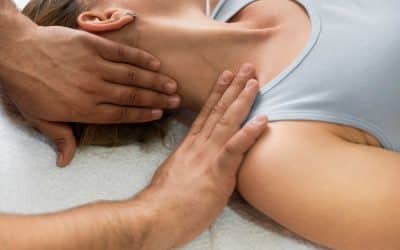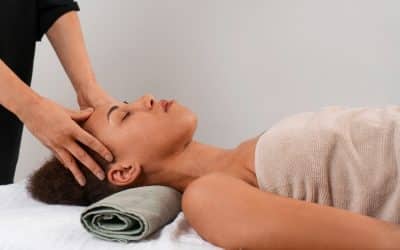Updated 29/08/2023
Upper Cross Syndrome Causes and Treatment
If you have excellent posture, then your risk of upper cross syndrome is relatively low. But, if your days are spent sitting in front of a computer screen, spending hours in a car, or sitting in front of the television, then you will more than likely experience upper cross syndrome at some point in your lifetime. In this article, we will be discussing the causes and symptoms of upper cross syndrome, as well as how you can treat it.
What is Upper Cross Syndrome
The average human head weighs 10 pounds, and while this does not sound like a lot of weight in terms of lifting with your arms or legs, it can be very strenuous for your neck to support. Our necks are designed to be able to rotate 40 degrees in each direction, as well as being able to bend backward or forward enough to look above and below. What it is not designed to do, is support that 10 pound head in a leaning forward position for hours in the day. Unfortunately, many of us work in jobs that require is to do just that. This is why poor posture related issues such as upper cross syndrome are becoming more and more common.
While poor posture is one of the more common causes of upper cross syndrome, it is by no means the only cause. Poor exercise technique is also a common cause of upper cross syndrome.
Not to be confused with scoliosis, upper cross syndrome comes with a wide variety of symptoms, all of which are directly related to poor posture, and continuous strain on the neck. It can also affect several muscles in the body including:
- Upper trapezius
- Levator scapulae
- Suboccipitals
If one or all of these muscles are experiencing pain or tightness, you may be suffering from upper cross syndrome. The source of this pain can be caused by a variety of factors associated with upper cross syndrome that includes:
- Tightening or shortness of the pectorals
- Weakening of the deep cervical flexors (small muscles in the front and side of the neck)
- Stretched or weakened rhomboids, serratus anterior, or lower trapezius
If you believe that you are experiencing neck or lower and upper back pain related to upper cross syndrome, you will want to seek treatment as soon as possible. These are not symptoms that will go away on their own.
Treating Upper Cross Syndrome
There are many ways to treat upper cross syndrome, and while one option isn’t necessarily better than the other, it is crucial that you do not try to remedy these symptoms on your own. They should only be treated by a professional. Physiotherapy or visiting a chiropractor are both excellent options, but can sometimes be costly. Sports massage in Leeds is a great option, as it targets the muscles specifically, and often has a lower price tag attached and we may even find other issues that also need addressing.
Sports massage and Deep Tissue Massage uses a combination of careful stretching, and massage that is often accompanied by heat. The massage therapist will usually start with a massage that uses only light to medium pressure, and then upgrade to a deeper tissue massage that will help to relieve the soft tissue and break up long-standing fascial adhesions.
Regardless of what treatment option you choose, it is essential to follow up with a variety of stretching, and corrective exercise to prevent symptoms from reoccurring (your sports massage therapist in Leeds or chiropractor should give you a list of exercises to help with aftercare).
If you do suffer from Upper Back Pain please also see our BLOG on how massage can help office workers for some great tips on improving your posture.
Frequently Asked Questions (FAQs)
How long does it take to alleviate upper back pain?
The duration varies based on the underlying cause and the effectiveness of your chosen remedies. Some individuals experience relief within a few days, while others may require several weeks of consistent effort.
Can stress really contribute to upper back pain?
Absolutely. Stress can lead to muscle tension and tightness in the upper back and neck, exacerbating pain. Incorporating stress-reduction techniques like meditation and deep breathing can make a significant difference.
Is upper back pain a sign of a serious medical condition?
In some cases, yes. While most upper back pain is related to muscle strain or poor posture, it can also be a symptom of more serious conditions like herniated discs or osteoarthritis. Consulting a healthcare professional is crucial for accurate diagnosis and treatment.
Are there any exercises I should avoid?
If you’re experiencing upper back pain, it’s best to avoid exercises that put excessive strain on your back, such as heavy deadlifts or overhead presses. Instead, focus on gentle stretching and low-impact strengthening exercises.
Can I fix my upper back pain on my own, or should I seek professional help?
Minor cases of upper back pain can often be addressed with self-care measures. However, if the pain is severe, chronic, or accompanied by other symptoms, it’s advisable to seek guidance from a healthcare professional.
What lifestyle changes can help prevent future upper back pain?
Maintaining good posture, staying active, managing stress, and incorporating ergonomic practices into your daily routine can all contribute to preventing future episodes of upper back pain.







